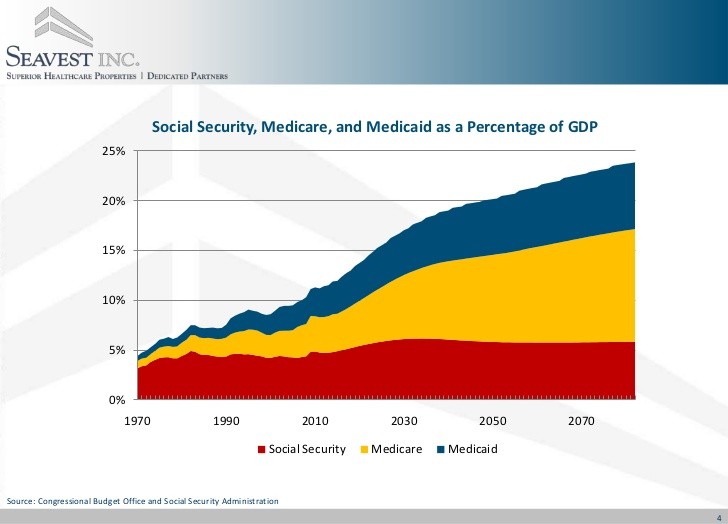Investing In Healthcare Facilities_3
Post on: 16 Март, 2015 No Comment

Healthcare
Sector Overview
The Indian healthcare industry was estimated at USD 40 billion in 2010 is expected to reach USD 280 billion by 2020. Large investments by private sector players are likely to contribute significantly to the development of India’s hospital industry, which comprises around 80% of the total market, according to the report ‘Indian Hospital Services Market Outlook’ by consultancy RNCOS. As per estimates by ratings agency Fitch, the sector is poised to grow to USD 100 billion by the year 2015 and further to USD 275.6 billion by 2020.
The Indian healthcare sector comprises the sub-sectors of hospitals, medical infrastructure, medical devices, clinical trials, outsourcing, telemedicine, health insurance and medical equipment. India presently has 0.5 million doctors, 0.9 million nurses and around 1.37 million beds, and has the highest number of medical and nursing colleges, at 303 and 3,904, respectively. In addition, the cost of medical treatment in India is one-tenth that compared to costs in the US and Europe.
The total FDI inflow into India in the hospitals and diagnostics sector for the period April 2000–April 2011 was USD 1 billion, according to the Department for Industrial Policy and Promotion (DIPP), which is part of the Ministry of Commerce and Industry and which is responsible for formulating the FDI policy in the country.
Policy and Promotion
Various policy and promotion initiatives undertaken by the government for the healthcare sector include:
- National Rural Health Mission (NRHM): National Rural Health Mission (2005–12) was set up in 2005 to ensure provision of effective healthcare to the country’s rural population, especially in Arunachal Pradesh, Assam, Bihar, Chhattisgarh, Himachal Pradesh, Jharkhand, Jammu & Kashmir, Manipur, Mizoram, Meghalaya, Madhya Pradesh, Nagaland, Orissa, Rajasthan, Sikkim, Tripura, Uttaranchal and Uttar Pradesh. As per the Ministry of Health & Family Welfare’s annual report for 2011–12, the initiatives under NRHM have contributed to reducing the maternal mortality rate (MMR), infant mortality rate (IMR) and total fertility rate (TFR). The IMR has declined by 3 points to 47 per 1,000 live births in 2010; the MMR declined from 254 in 2004–06 to 212 in 2009; the TFR declined from 2.9 in 2005 to 2.6 in 2009.
- Automatic FDI: India’s foreign investment policy is very liberal for hospitals. Since January 2000, FDI is permitted up to 100% under the automatic route for the hospitals sector in India. Approval from the Foreign Investment Promotion Board (FIPB) is required only for foreign investors with prior technical collaboration, but allowed up to 100%.
- Priority status: The government also allots priority to proposals of greater social relevance such as hospitals, life saving drugs and equipment.
- National Urban Health Mission (NUHM): This mission was set up in 2005 to address the healthcare needs of slum dwellers across urban India; there are nearly 4.26 crore slum dwellers spread across 640 towns and cities in India.
- Rise in funding for the sector: The government has increased the plan allocation for public health spending to USD 5.96 billion in 2011–12 from USD 4.97 billion in 2010–11. Further, the Ministry of Health and Family Welfare has decided to increase health expenditure to 2.5% of GDP by the end of the 12th Five-Year Plan, from the current 1.4%.
- Encouraging policies: The government is also encouraging the growth of this market through policies such as a reduction in import duties on medical equipment, higher depreciation on life-saving medical equipment (40%, up from 25%), and a number of other tax incentives.
- Reduction in customs duty: Customs duty on life-saving equipment has been reduced to 5% from 25%, and is exempted from countervailing duty. Import duty on medical equipment has been reduced to 7.5%.

Major Players
Many foreign players have entered the Indian healthcare market due to the large market. Some of these foreign players are Pacific Healthcare of Singapore, which is a JV with Vital Healthcare in Hyderabad; Columbia Asia Group, a Seattle-based hospital services company; Wockhardt Hospitals; Steris, a US-based medical equipment company that has set up a wholly-owned arm in India; and Amcare Labs, an affiliate of Johns Hopkins International of the US, which has set up a diagnostic laboratory in Hyderabad through a JV with the Apollo Group.
Besides hospitals, foreign players have also evinced interest in establishing research and development (R&D) centres in India; for example, Abbot Laboratories has announced plans to set up an R&D centre in collaboration with Syngene, a contract research subsidiary of Biocon Ltd. to develop nutrition products in India; US pharma company Merck, which is known as MSD outside of the US and Canada, plans to set up a laboratory in New Delhi for developing vaccines at an estimated cost of USD 133.93 million.
In addition, India is now acknowledged as the premier destination for medical tourism, owing to cheaper costs and treatments in the country. According to industry estimates, the market size of medical tourism in India is growing at over 25% annually at over USD 2.5 billion. The segment’s growing business potential prompted the ITC Group to set up the 58-room Fortune Park Lake City business hotel at the Jupiter LifeLine Hospitals complex in Thane, near Mumbai, to serve medical tourists. Most international patients are from Africa, SAARC and West Asia. Patients requiring higher-end tertiary care are now coming to India for cardiology, orthopaedics, neurology, oncology and organ transplants. Affordability of treatment is a big pull factor — treatment in India costs just 10% to 20% of what it costs abroad.
Domestic hospitals have a long-standing reputation in the healthcare sector; some of the prominent private Indian hospital chains that offer world-class medical treatment include Max Healthcare, Fortis, Escorts Healthcare, Moolchand Hospital, Manipal Group of Hospitals, Woodlands Multispeciality Hospital, Anandlok Hospital, Jitendra Narayan Ray Sishu Seva Bhavan and General Hospital, Apollo Group of Hospitals, Sarvodaya Hospital, Suguna Ramaiah Hospital, Chinmaya Mission Hospital, Manipal Hospitals, Narayana Hrudayalaya, CSI Kalyani General Hospital, KHM Hospitals, Kumaran Hospitals, P. D. Hinduja National Hospital, Joy Hospital, Sir H. N. Hospital and Research Centre, Sowmya Hospital, etc.
Sector Outlook
The main areas where a number of market opportunities exist for both domestic and foreign players in the Indian healthcare domain include medical tourism, healthcare insurance, telemedicine and medical equipment.
The main drivers of growth in the healthcare sector are India’s booming population; growing middle class; increasing purchasing power; growth in infectious, chronic degenerative and lifestyle diseases; and rising awareness of personal healthcare.
Some of the advantages and opportunity areas for further growth of the sector are:
- A low-cost destination: India provides best-in-class treatment, in some cases at less than one-tenth the cost incurred in the US and Europe.
- Rising medical tourism: The main factors contributing to rising medical tourism in India are presence of a well-educated, English-speaking medical staff, as well as state-of-the art private hospitals and diagnostic facilities.
- Growing economy: With a growing middle class, and rising health awareness and purchasing power, the healthcare insurance sector is poised for strong growth in coming years in India.
- Telemedicine: Growth in the telemedicine sub-sector is taking place due to the need for specialist doctors in rural areas, as most of them live in urban or semi-urban centers of India. Rural areas, roughly with a population of 700 million, can be provided healthcare facilities through telemedicine, with remote diagnosis, and monitoring and treatment of patients via videoconferencing.
- Healthcare infrastructure: Growth in Indian healthcare infrastructure is accompanied by strong demand for medical equipment such as x-ray machines, CT scanners and electrocardiographs, highlighting an opportunity for global players making quality products in this space.
- Rising population: In 2011, India’s population was 1.21 billion and by 2030, India is expected to surpass China as the world’s most populous nation.














